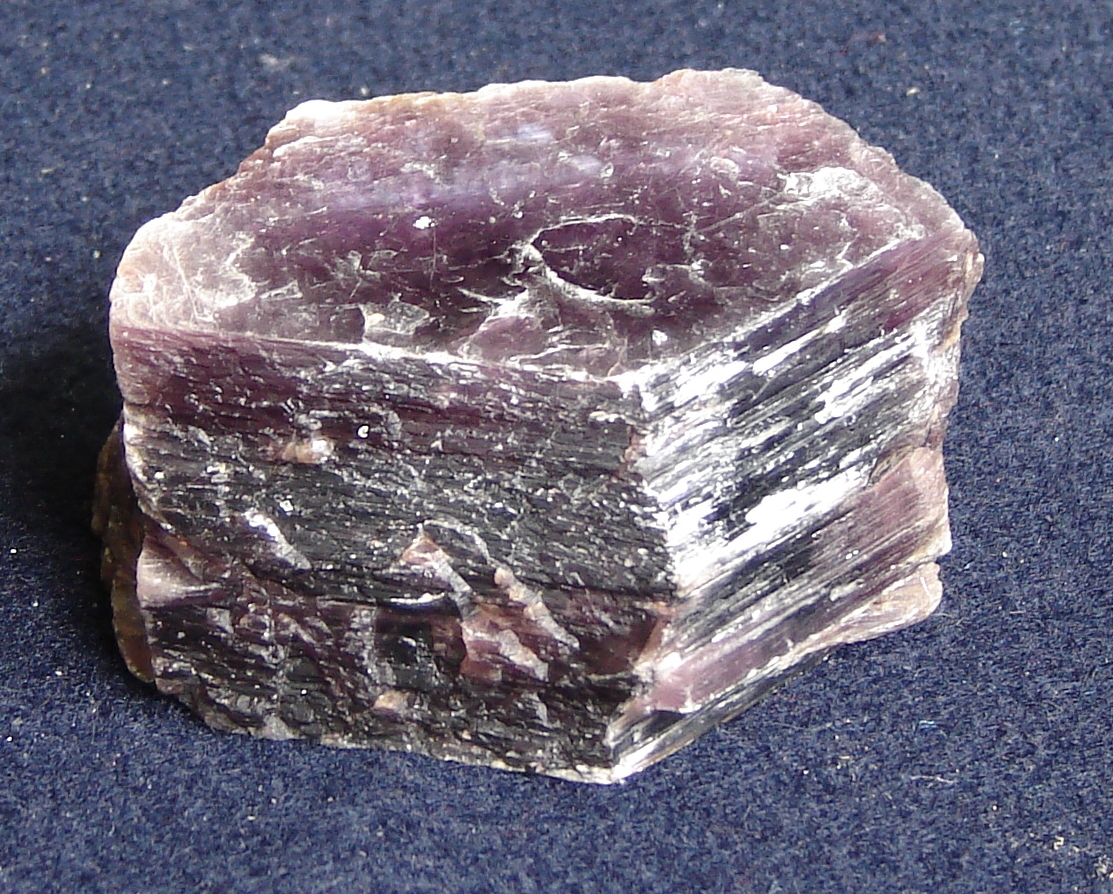- Lepidolite
Infobox mineral
name = Lepidolite
category =Silicate mineral
boxwidth =
boxbgcolor =

imagesize =
caption = Crystal of lepidolite,Brazil
formula = KLi2Al(Al,Si)3O10(F,OH)2
molweight =
color = Pink, purple, rose-red, violet-gray,yellowish, white, colorless
habit = Tabular to prismatic pseudohexagonal crystals, scaly aggregates and massive
system =Monoclinic
twinning = Rare, composition plane
cleavage = [001] Perfect
fracture = Uneven
mohs = 2.5 - 3
luster = Vitreous to pearly
polish =
refractive = a=1.525-1.548, b=1.551-1.58, g=1.554-1.586
opticalprop = Biaxial (-)
birefringence = 0.0290-0.0380
dispersion =
pleochroism =
fluorescence=
absorption =
streak =
gravity = 2.8 - 2.9
density =
melt =
fusibility =
diagnostic =
solubility =
diaphaneity = Transparent to translucent
other =
references = http://rruff.geo.arizona.edu/doclib/hom/lepidolite.pdf Handbook of Mineralogy] [http://webmineral.com/data/Lepidolite.shtml Webmineral]Lepidolite (KLi2Al(Al,Si)3O10(F,OH)2) is a lilac or rose-violet colored phyllosilicate
mineral of themica group that is a secondary source oflithium . ["Manual of Mineralogy, 20th Ed." by Cornelius Hurlbut and Cornelis Klein.] It is associated with other lithium-bearing minerals likespodumene inpegmatite bodies. It is one of the major sources of the rarealkali metal s,rubidium andcaesium . [H. Nechamkin, "The Chemistry of the Elements", McGraw-Hill, New York, 1968.] In 1861Robert Bunsen andGustav Kirchhoff extracted 150 kg of lepidolite and yielded few grams of rubidium salts for analysis, and therefore discovered the new element rubidium. [cite journal
title = Chemische Analyse durch Spectralbeobachtungen
pages = 337–381
author = G. Kirchhoff, R. Bunsen
doi = 10.1002/andp.18611890702
journal =Annalen der Physik und Chemie
volume = 189
issue = 7
year = 1861]It occurs in
granite pegmatite s, in some high-temperature quartz veins,greisen s, and granites. Associated minerals include:quartz ,feldspar ,spodumene ,amblygonite ,tourmaline ,columbite ,cassiterite ,topaz andberyl .Notable Occurrences: Brazil; Ural Mountains, Russia; California; Tanco Pegmatite, Bernic Lake Manitoba, Canada, Madagascar.
References
Wikimedia Foundation. 2010.
